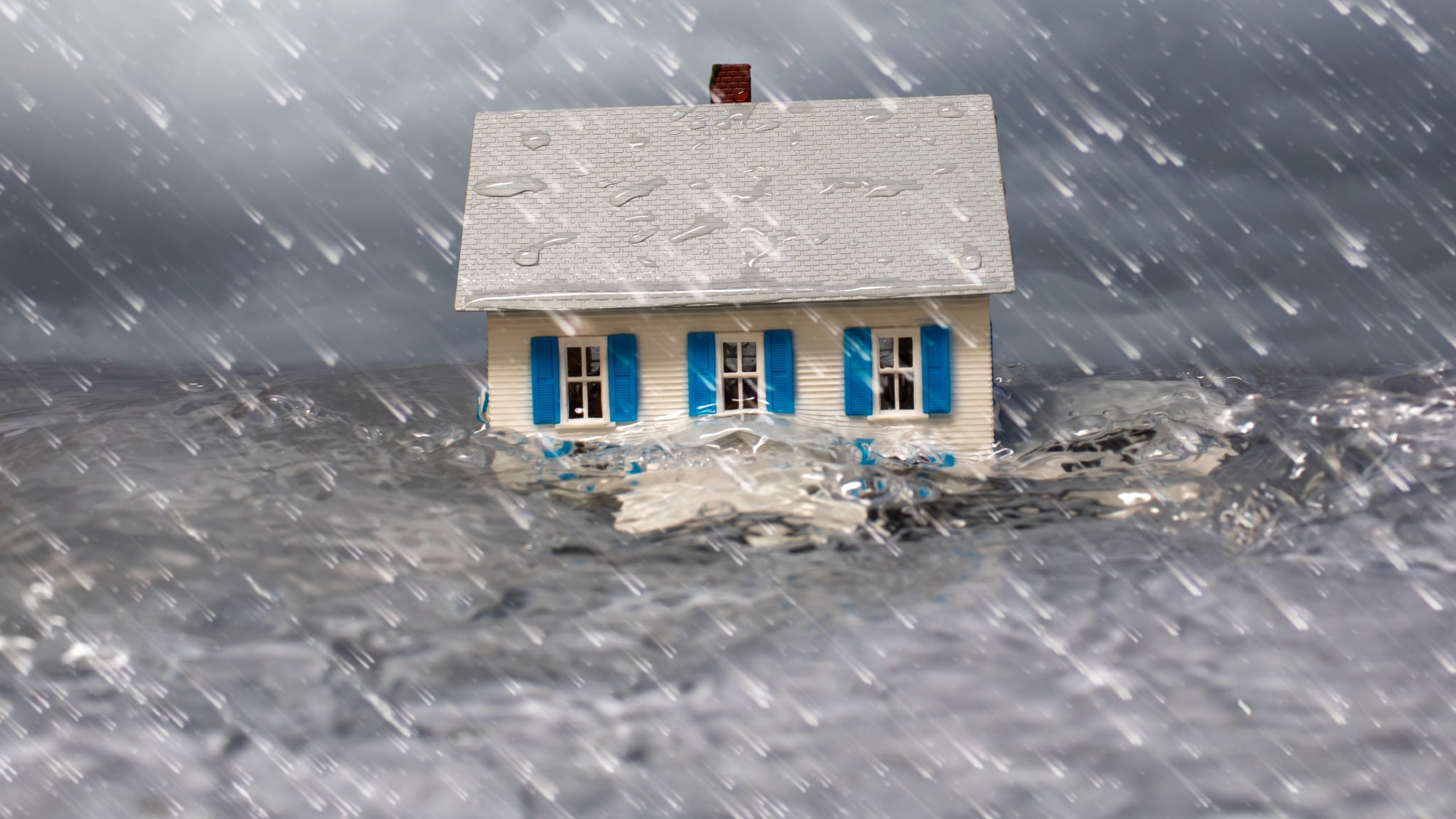Storm Éowyn: your rights when it comes to home insurance claims
Storm damage is covered on most policies but there may be exemptions that mean your claim gets rejected

Homeowners are counting the cost of the latest storm to hit the UK, with insurers expecting an increase in claims for damage to properties.
Storm Éowyn brought weather warnings last week with "very strong winds and heavy rain" in parts of the UK, said the Met Office. Gusts of 100mph were recorded in Drumalbin in Scotland – the highest wind speed since the Met Office started naming storms in 2015.
After the "fierce impact" of Storm Éowyn, said Yahoo News, more weather warnings have been issued regarding Storm Herminia, which is "set to bring more flooding and transport disruption".
The Week
Escape your echo chamber. Get the facts behind the news, plus analysis from multiple perspectives.

Sign up for The Week's Free Newsletters
From our morning news briefing to a weekly Good News Newsletter, get the best of The Week delivered directly to your inbox.
From our morning news briefing to a weekly Good News Newsletter, get the best of The Week delivered directly to your inbox.
Train delays and cancellations are predicted and most rail companies offer an "automatic compensation service", said the BBC, although a claim still needs to be made.
But beyond the travel hassle, the "howling winds and torrential rain" can also cause "serious damage to our homes", said MoneySuperMarket.
Is storm damage covered by home insurance?
Storms and extreme weather can cause damage such as "broken roofs, frozen pipes, falling trees and loss of power", said Which? Insurers may pay out for "cleaning up and repairing your property", replacing contents or even temporary accommodation.
Trade body the Association of British Insurers has said firms will be "ready to help and support" policyholders in the wake of Storm Éowyn. This is because insurance is there to protect you "when the worst happens", said MoneySavingExpert, but what’s included as standard "can vary between policies".
A free daily email with the biggest news stories of the day – and the best features from TheWeek.com
Storm and wind damage is "usually covered" in most policies, said Go.Compare, but weather damage to fences and gates is "usually excluded", as is "any damage caused as a result of wear and tear or negligence".
Can insurers reject a storm damage claim?
There are a few caveats when making a claim, said Which? You may not be covered if the damage is a result of "general wear and tear" such as if water enters your home through a poorly maintained roof.
Insurers will want evidence of damage as well, said MoneySuperMarket, "to prove that the damage wasn't pre-existing due to wear and tear". This distinction is "crucial" in determining the validity of your claim.
You may even need accidental damage coverage for some claims such as water damage from a leaking roof. Standard policies may not cover this, "leaving you to foot the bill for repairs".
There is also a "storm damage definition", said MoneyWeek, that insurers can use to reject claims, known as the "55mph rule".
A storm is only "technically declared" when there are wind speeds with gusts of at least 48 knots or 55mph where you live. So an insurer may reject your claim if its data shows the wind speed where you lived was "below the 55mph definition".
What happens if an insurer rejects your claim?
Claims are usually rejected and complaints arise due to dispute over "what a storm actually is", said the Financial Ombudsman Service, and "whether the damage was caused by a storm".
Your insurer has eight weeks to deal with a complaint and you can then complain to the Financial Ombudsman Service if you are unhappy.
A Financial Ombudsman Service spokesperson told MoneyWeek: "During these difficult times, we expect insurers to treat consumers fairly and settle claims without unnecessary delays".
The spokesperson said getting a "fair answer" on a claim dispute is "free and easy".
Marc Shoffman is an NCTJ-qualified award-winning freelance journalist, specialising in business, property and personal finance. He has a BA in multimedia journalism from Bournemouth University and a master’s in financial journalism from City University, London. His career began at FT Business trade publication Financial Adviser, during the 2008 banking crash. In 2013, he moved to MailOnline’s personal finance section This is Money, where he covered topics ranging from mortgages and pensions to investments and even a bit of Bitcoin. Since going freelance in 2016, his work has appeared in MoneyWeek, The Times, The Mail on Sunday and on the i news site.
-
 The Week’s big New Year’s Day quiz 2026
The Week’s big New Year’s Day quiz 2026Quiz of the Year How much do you remember about 2025’s headlines? Put yourself to the test with our bumper quiz of the year
-
 Is tanking ruining sports?
Is tanking ruining sports?Today's Big Question The NBA and the NFL want teams to compete to win. What happens if they decide not to?
-
 ‘Netflix needs to not just swallow HBO but also emulate it’
‘Netflix needs to not just swallow HBO but also emulate it’instant opinion Opinion, comment and editorials of the day
-
 How travel insurance through a credit card works
How travel insurance through a credit card worksThe explainer Use a card with built-in coverage to book your next trip
-
 Do you need flood insurance? What to know ahead of hurricane season.
Do you need flood insurance? What to know ahead of hurricane season.the explainer Some experts recommend getting flood insurance even if you're far from the coasts
-
 Classic car insurance: how best to protect your vintage vehicle
Classic car insurance: how best to protect your vintage vehicleThe Explainer Insuring your classic car may be cheaper than you think
-
 Low temperatures trigger cold weather payments
Low temperatures trigger cold weather paymentsSpeed Read Forecasters have warned that temperatures could drop to -10C